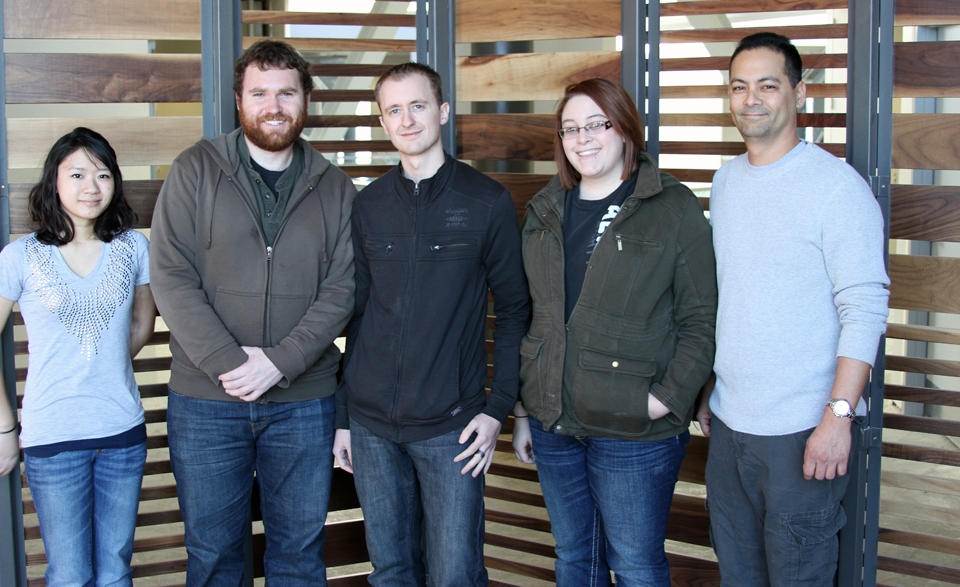
Two teams led by UNL engineering students finished in the top five of the 2012 Smarter Planet Challenge, an international competition for college/university teams to improve the world's technology solutions. IBM and the Institute of Electrical and Electronics Engineers sponsor the competition.
Placing fourth was "SEER," a project to enhance television viewing by adding additional on-screen video input sources for a layered multimedia experience. Team leader Robert Boulter, a senior UNL electronics engineering major, said learning of the team's award was exciting, especially when they saw the other winners' submissions from highly regarded schools.
The $2,000 prize from the Smarter Planet Challenge will help the SEER team develop a prototype for an upcoming challenge: the Computer and Electronics Engineering Senior Projects Showcase, which is April 25 at the Peter Kiewit Institute in Omaha.
In the SEER team's documentation, the resulting TV system would equip multiple users to view simultaneous videos from separate sources, all on the same screen.
"With SEER, it would be possible for one user to watch a Blu-Ray while a second plays a gaming console, using the same television and without it being separated into two screens," Boulter said. "This will enable multiple-user access to a single appliance."
The SEER team worked in class and several additional hours each week during the fall semester at the Kiewit Institute.
The interdisciplinary group includes Hong-Yen Hoang of La Vista, an accounting major at the University of Nebraska at Omaha; Marc McCaslin of Bellevue, a senior UNL electronics engineering major; Sara Shinn of Nebraska City, a senior who majors in computer engineering with UNL and computer science at UNO; and Timothy Struble-Larsen of Omaha, a senior studying electronics engineering with UNL engineering programs in Omaha.
A Nebraska team also earned fifth place in the challenge with its GIS-based Wind Farm Suitability and Planning Study. Led by UNL electrical engineering graduate students Salman Kahrobaee of Tehran, Iran, and Dingguo Lu of Hangzhou, China, team members also included UNL GIS and remote sensing students Tarlan Razzaghi of Tehran, Anthony L. Nguy-Robertson of Mooresville, Ind., and David Gibbs of Earlysville, Va.
Lu and Kahrobaee had worked on the initial concept in a wind energy class taught by Jerry Hudgins, professor and chair in UNL's electrical engineering department. They further developed the project with their collaborators and Don Rundquist, a professor in the School of Natural Resources, to help layer data on site topography, wind patterns and other environmental factors for more informed and effective placement of wind turbines.
"It's great that what we learned in class can apply to real challenges," Lu said.
Kahrobaee added, "It was fun to work on this project with students from other disciplines."
Their team's $1,000 prize will help them refine the project for potential commercialization.
UNL's two teams helped the Big Ten Conference earn four of the top five places in the competition. Projects from the University of Michigan and Penn State University finished first and second, respectively. A team from Nanyang Technological University in Singapore was third.
For more information on the competition and winning projects, go to http://go.unl.edu/e4p.
— Carole Wilbeck, Engineering